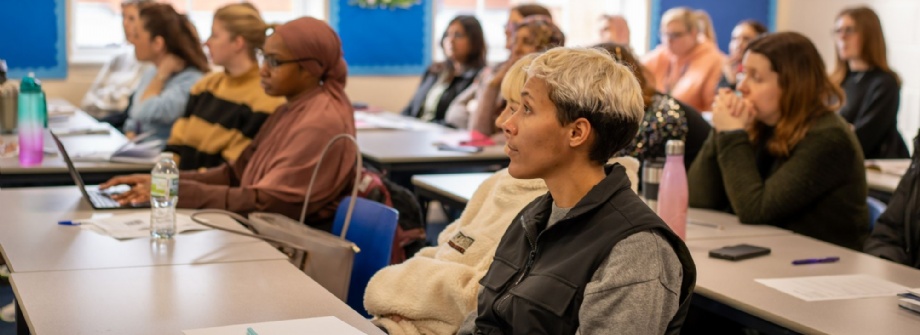COO Blog // Bridging the Support Staff Gap in Education

 When we think about education, we often focus on teachers and professors as the primary drivers of learning. However, there is a vast support network that plays a critical role in enabling the education system to function effectively. This includes support staff such as business service leaders, administrators, and learning support assistants. Yet, there is often little to no alignment or crossover between these staff in secondary and higher education. Building on some themes from my first blog, in this post I will explore some reasons why secondary and higher education should be more closely aligned to enable support staff to move between sectors.
When we think about education, we often focus on teachers and professors as the primary drivers of learning. However, there is a vast support network that plays a critical role in enabling the education system to function effectively. This includes support staff such as business service leaders, administrators, and learning support assistants. Yet, there is often little to no alignment or crossover between these staff in secondary and higher education. Building on some themes from my first blog, in this post I will explore some reasons why secondary and higher education should be more closely aligned to enable support staff to move between sectors.
Firstly, it is important to acknowledge that there is significant overlap in the skills and knowledge required for support staff working in both sectors. For instance, many administrators and support roles have similar responsibilities, such as managing student records, providing guidance and support to students, or coordinating projects with other staff members. By aligning secondary and higher education more closely, support staff will be better equipped to transfer their skills and knowledge across sectors, enabling them to take on new challenges and roles more effectively.
Moreover, it is essential to recognise that there is often a disjointed approach between the policies and procedures employed in secondary and higher education spaces. This disconnect can lead to a lack of continuity in learning and can even result in gaps in support for students. By aligning secondary and higher education more closely, staff will be able to create a more cohesive approach to student support, resulting in better outcomes for students. Higher education often talks about the ‘student journey’ but does so in a silo that currently ignores the fact it is not the start of this process.
Secondly, aligning secondary and higher education can create a more integrated and cohesive education system. By bringing these sectors closer together, support staff will be better able to collaborate and share ideas, leading to more innovative and effective approaches to student support. This, in turn, can help to create a more seamless transition for students between secondary and higher education, ensuring that they receive the necessary support to succeed in their chosen field of study.
Thirdly, aligning secondary and higher education can help address issues of retention and student success. We know there is a significant issue with students dropping out of education, particularly in higher education. By enabling support staff to move between sectors, the sector can tap into a wider pool of talent, increasing the availability of skilled workers and reducing gaps in support for students. By enabling support staff to move between sectors, educators and support staff will be better equipped to address emerging needs, ensuring that students receive the support they need to succeed.
Finally, aligning secondary and higher education can create more opportunities for career progression and professional development for support staff. Currently, support staff may feel limited in their career options within a single sector. However, by enabling them to move between different parts of the education landscape, they will have access to a wider range of roles and responsibilities, as well as opportunities to develop new skills and knowledge. This can help to foster a more diverse and inclusive education system, providing opportunities for support staff from all backgrounds to succeed and progress in their careers.
The establishment of multi-academy trusts creates the opportunity for more roles within the secondary sector that are directly comparable to those in large universities. And vice versa. The Confederation of School Trusts have recently launched a major inquiry into how Trusts can drive more improvement within the sector:
The Inquiry on Sector-led Trust Improvement will seek to answer four key questions that will help trusts deliver constantly improving education for their pupils:
- How can trusts gain assurance about the quality of their work and capacity to improve?
- What are the common goals of trust improvement?
- Which practices do trusts mobilise towards these goals?
- What are the implications of the above for building sector capacity and capability?
It seems to me that the potential to bring two elements of the wider education system closer together is a major potential benefit – and one we should be shouting about more loudly.
Dr Tom Flynn
Chief Operating Officer
